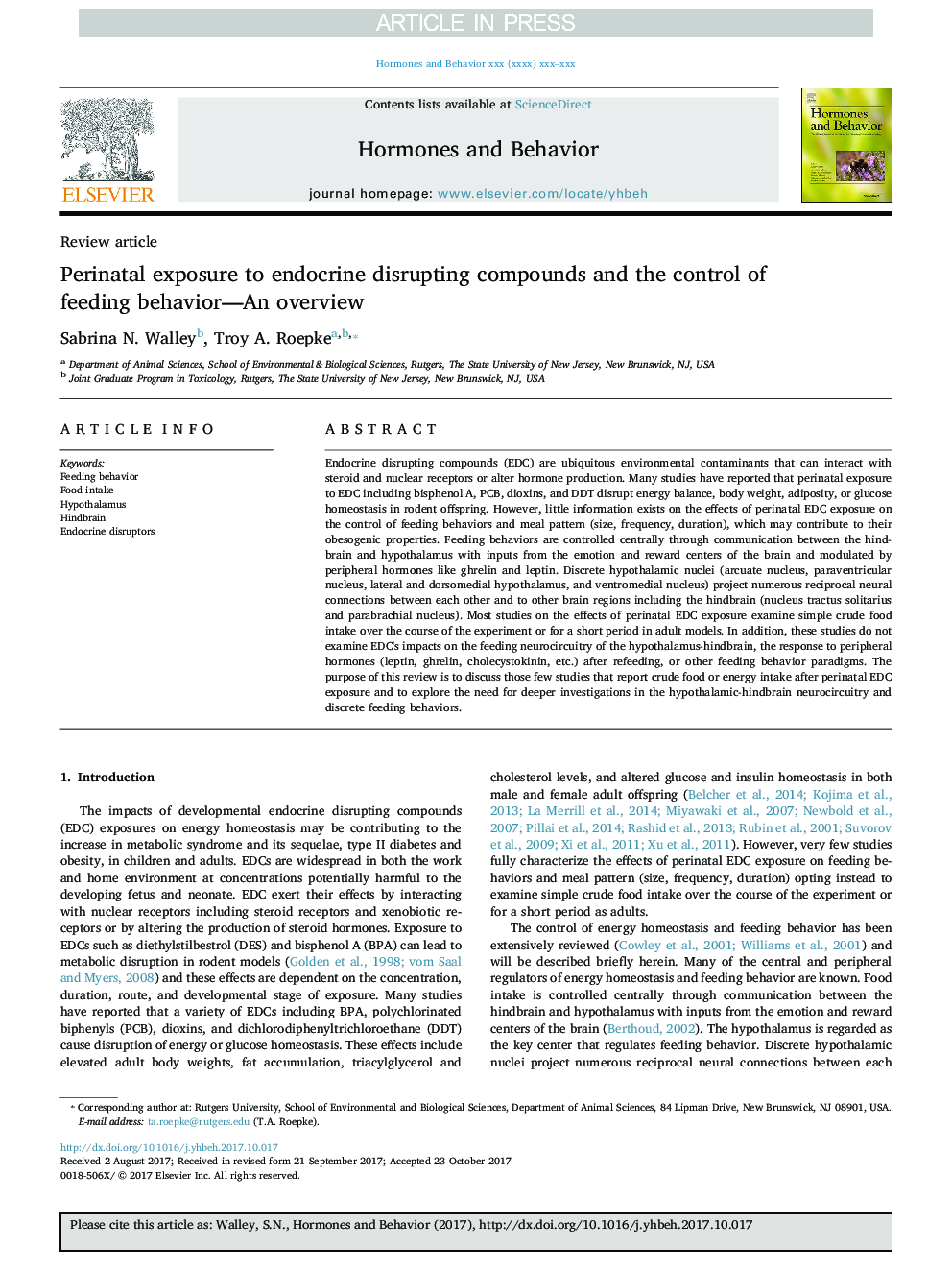| Article ID | Journal | Published Year | Pages | File Type |
|---|---|---|---|---|
| 6793809 | Hormones and Behavior | 2018 | 7 Pages |
Abstract
Endocrine disrupting compounds (EDC) are ubiquitous environmental contaminants that can interact with steroid and nuclear receptors or alter hormone production. Many studies have reported that perinatal exposure to EDC including bisphenol A, PCB, dioxins, and DDT disrupt energy balance, body weight, adiposity, or glucose homeostasis in rodent offspring. However, little information exists on the effects of perinatal EDC exposure on the control of feeding behaviors and meal pattern (size, frequency, duration), which may contribute to their obesogenic properties. Feeding behaviors are controlled centrally through communication between the hindbrain and hypothalamus with inputs from the emotion and reward centers of the brain and modulated by peripheral hormones like ghrelin and leptin. Discrete hypothalamic nuclei (arcuate nucleus, paraventricular nucleus, lateral and dorsomedial hypothalamus, and ventromedial nucleus) project numerous reciprocal neural connections between each other and to other brain regions including the hindbrain (nucleus tractus solitarius and parabrachial nucleus). Most studies on the effects of perinatal EDC exposure examine simple crude food intake over the course of the experiment or for a short period in adult models. In addition, these studies do not examine EDC's impacts on the feeding neurocircuitry of the hypothalamus-hindbrain, the response to peripheral hormones (leptin, ghrelin, cholecystokinin, etc.) after refeeding, or other feeding behavior paradigms. The purpose of this review is to discuss those few studies that report crude food or energy intake after perinatal EDC exposure and to explore the need for deeper investigations in the hypothalamic-hindbrain neurocircuitry and discrete feeding behaviors.
Related Topics
Life Sciences
Biochemistry, Genetics and Molecular Biology
Endocrinology
Authors
Sabrina N. Walley, Troy A. Roepke,
